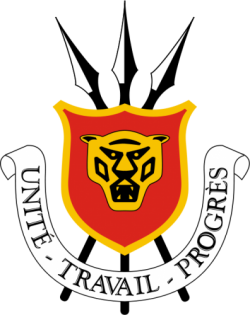ABOUT BURUNDI
THE COUNTRY

The Republic of Burundi is a landlocked country in the Great Rift Valley
where the African Great Lakes region and East Africa converge.
It is bordered by Rwanda to the north,
Tanzania by the east and southeast,
and the Democratic Republic of Congo to the west;
Lake Tanganyika lies along its southwestern border.
The capital cities are Gitega political capital
and Bujumbura economic capital which is also the largest city.
GEOGRAPHY

Burundi is a country straddling Central and East Africa.
It is surrounded by the United Republic of Tanzania to the east and south,
the Democratic Republic of Congo to the west and Rwanda to the north.
It is landlocked but has a large shore on Lake Tanganyika.
Since February 4, 2019, Gitega has been designated as the political capital,
while Bujumbura has become the economic capital.
With a population of around 12 million spread over an area of 27,834 km²,
Burundi is one of the most densely populated countries in Africa.
However, despite its small size and isolation, the country has been able
to take advantage of this intermediate situation between Central and East Africa,
between English-speaking and French-speaking Africa, in terms of economic,
human or cultural exchanges as well as in the geopolitical balance.
CLIMATE

Burundi lies on the western escapement of the high African plateau, 1400 to 1800 m above sea level, though there are elevations over 2000 m in the west. The land slopes more gently towards the east. Annual rainfall is plentiful (800 to 1400 mm) and comparatively reliable. The vegetation is generally moist savanna with grassland covering the higher-lying parts. Average temperature in the higher parts is 20 degrees C and 23 degrees C in the lower areas.
Elevation is a major factor in Burundi’s climate, greatly moderating its tropical character. The country’s generally high elevation produces relatively cool temperatures, which average only about 70 °F (21 °C) throughout the year in the central plateau area and usually drop to below 60 °F (15 °C) at night. At lower elevations the annual average is only slightly higher—for example, at Bujumbura in the Imbo valley. Annual precipitation, which averages 60 to 70 inches (1,500 to 1,800 mm) in the highest-lying areas, is only about 40 inches (1,000 mm) on the shores of Lake Tanganyika. There is a short dry season from May to August.
CULTURE




The Burundian drummers known as Abatimbo in Kirundi play the sacred drums, which are an integral part of the rich Burundian cultural heritage.
You may also catch sight of our elegant female dancers who will leave you dreaming. Enjoy more the creativity of our craftsmen in age-old crafts such as basketry, pottery, sculpture and painting continue to tell a tale on Burundian traditions and culture that has been handed down through generations
Burundi is one of the very few African countries with a sense of “linguistic homogeneity.” Its people all speak the same national language: Kirundi. French is the first foreign language and English is progressively becoming more important. Swahili as well.
Burundi’s culture is based on local traditions and the influence of neighboring countries. The culture of Burundi includes mainly songs, dances, stories and legends. Poetry is sometimes recited during social gatherings.
The shepherds have their own pastoral songs which they sing at the end of the day when leading the animals back from the pastures; and in the home the elders tell the young generation stories and legends relating the life of their ancestors.
Art in Burundi is extremely varied. Crafts are an important art form in Burundi. Basket weaving is a popular craft for Burundian artisans. Other crafts such as masks, shields, statues and pottery are made in Burundi.
Drums play a big part in the music of most African countries, but in Burundi they have an almost spiritual meaning. The world-famous Royal Drummers of Burundi, who have performed for over forty years, are noted for traditional drumming using the karyenda, amashako, ibishikizo, and inkiranya drums. Dance often accompanies drumming performance, which is frequently seen in celebrations and family gatherings.The drum performance, a kind of ritual dance, was inscribed on the Representative List of the Cultural Heritage of Humanity of the UN’s heritage agency UNESCO in 2014.
The Intore is the best known dance of Burundi/Rwanda and is a warrior dance performed in lines and with weapons. It also has variations according to what is celebrated.Intore, sometimes called the Dance of Heroes, is a traditional dance performed by men In pre-colonial times, intore was a war dance performed Dance numbers were often war-themed, and the performing men carried actual weapons.

